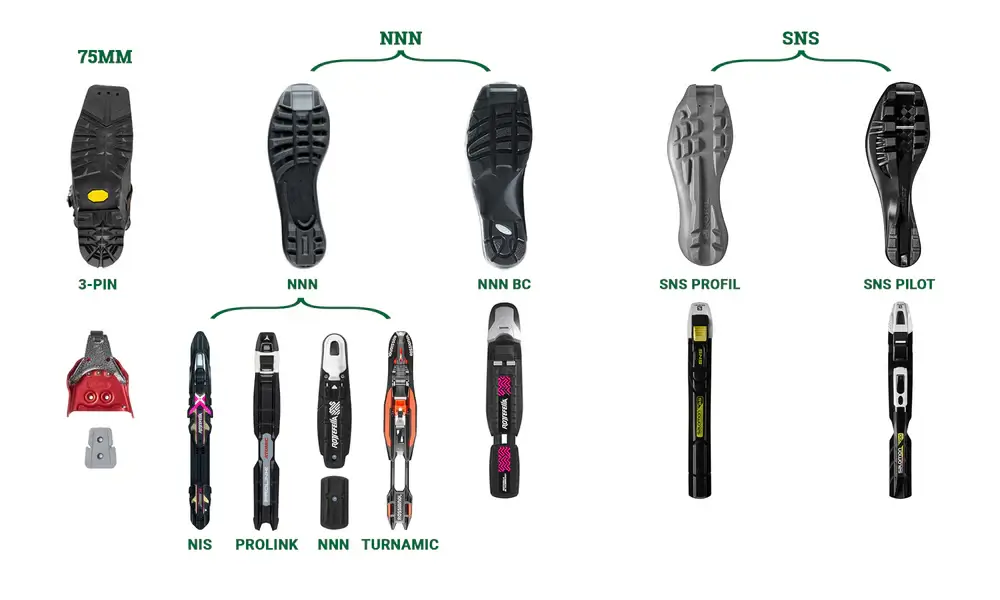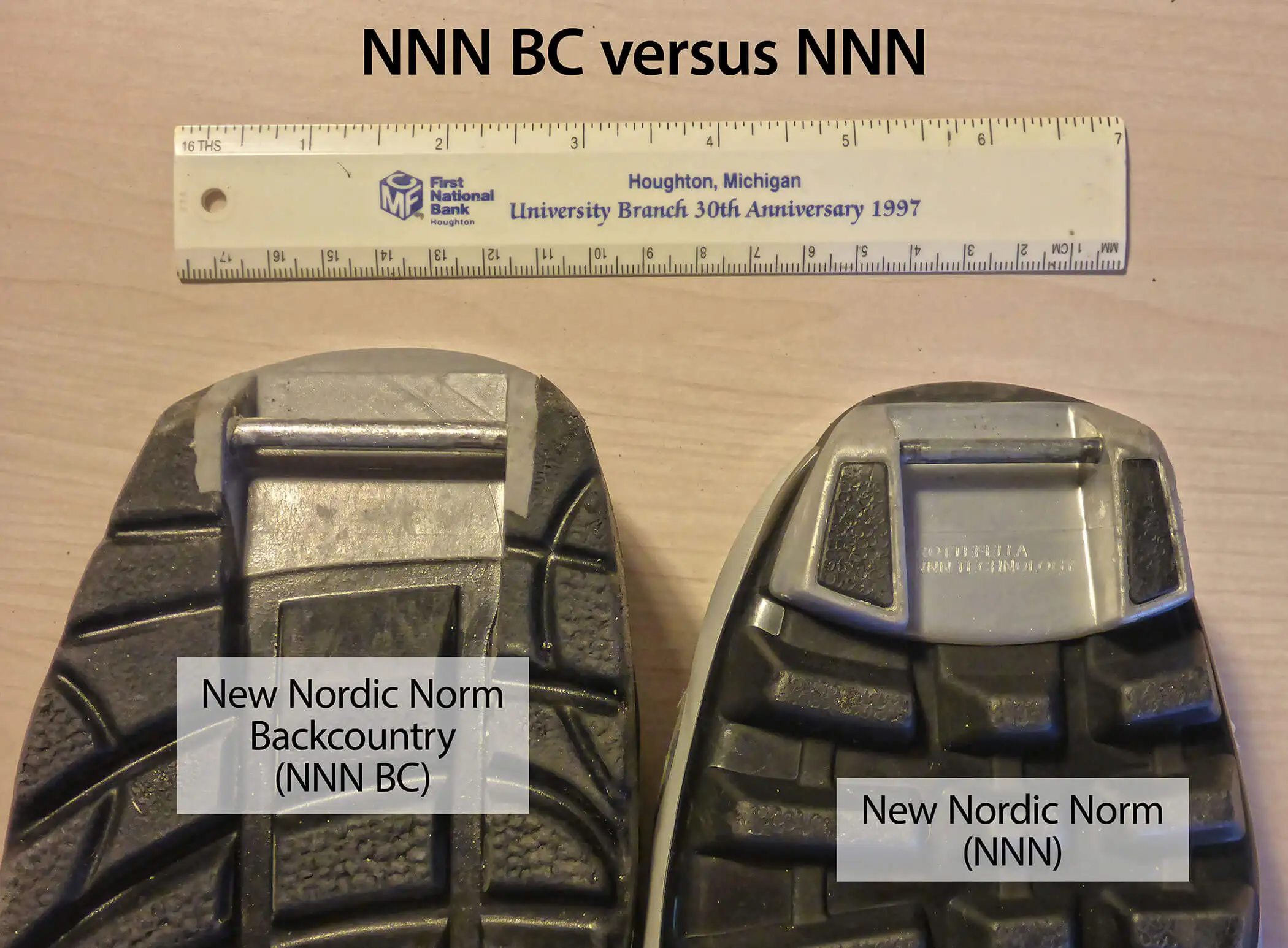The Evolution of Nordic Bindings
From classic 3-pin systems to modern NNN Backcountry setups — discover how Nordic gear has evolved for today's adventures.

📜 A Brief History
In the early days of Nordic skiing, the 75mm 3-pin binding was king. Durable, simple, and rugged, 3-pin setups dominated Nordic backcountry travel throughout the 20th century.
However, late in the 1980s, Rottefella introduced the revolutionary New Nordic Norm (NNN) system. Instead of pins, NNN used rails under the boot to provide stability, making gear lighter and more efficient for skate and classic skiing alike.
🛠️ NNN and NNN BC
As skiing grew more specialized, NNN evolved into two major branches: NNN for groomed track skiing, and NNN BC (Backcountry) for off-trail adventures. NNN BC boots and bindings are beefier, offering better ankle support and wider connection points — crucial when breaking trail through deep snow or rugged terrain.
Today, NNN BC setups have largely replaced 3-pin bindings for most backcountry touring, blending lightweight performance with off-trail capability.

🛠️ NNN and NNN BC Bar Size
⚙️ Bar Sizes & Compatibility
Nordic boots have different bar widths that must match the binding system.
NNN boots have a narrower bar for groomed trails and lightweight skiing.
NNN BC boots use a wider, stronger bar for off-trail backcountry use.
Mismatched gear can cause poor control or breakage — always pair NNN boots with NNN bindings, and NNN BC with NNN BC.
🎯 Choosing the Right Setup
If you're sticking to groomed trails, a classic NNN system is lightweight, efficient, and fast. If you're heading into ungroomed powder or exploring backcountry routes, NNN BC is your best friend — offering the extra control and durability you need to stay upright and smiling.
At Powder House, we can help you pick the right gear based on your adventure goals!